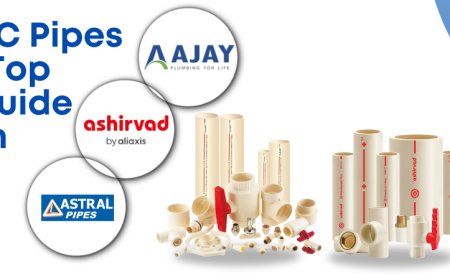What’s the Difference Between Fire Collars and Fire Stop Systems?
Understand the key differences between fire collars and fire stop systems. Learn how each functions and why they matter in building safety and code compliance.

Fire protection in buildings involves more than just alarms and sprinklers. Passive fire safety systems play a major role in slowing the spread of flames, smoke, and heat. Construction often requires pipes and cables to pass through fire-rated walls and floors, and those penetrations must be properly sealed to maintain the fire barrier. One solution commonly used in such cases is a fire collar, which is installed around plastic pipes to block openings left by melting material. Understanding how this product differs from broader fire stop systems helps clarify their roles in building safety.
Purpose and Function of Fire Collars
A fire collar is a device designed to seal around plastic pipes that penetrate through fire-rated assemblies. These collars contain intumescent material that expands significantly during high heat exposure. As plastic pipes begin to soften and lose shape, the collar reacts by expanding inward, crushing the pipe and filling the gap it leaves behind.
This response slows the advance of fire and smoke from one side of the barrier to the other. Without it, melted pipes would leave open pathways for heat and gases to travel, quickly compromising the fire separation. Fire collars are specifically tested and rated for different pipe types, sizes, and wall or floor materials. Their use is targeted and critical in locations where non-metallic piping is present.
Scope and Role of Fire Stop Systems
Fire stop systems refer to a wider group of products and methods used to seal penetrations in fire-rated assemblies. These include materials like sealants, putties, wrap strips, sleeves, firestop pillows, and composite sheets. Each is chosen based on the type of penetration, the material surrounding it, and the expected movement or exposure.
Unlike fire collars, which are mostly used for plastic pipe protection, fire stop systems address a broader range of challenges. Openings around cables, ductwork, metal pipes, and even expansion joints are handled with these systems. The selection and design of fire stop materials depend on fire rating requirements, penetration dimensions, and application conditions. They work together to preserve the integrity of the fire-rated construction.
Installation and Application Differences
Installing a fire collar is relatively straightforward but requires precision. The collar is fitted around the pipe and mechanically fastened to the wall or floor surface. Sealant may be applied to fill any minor gaps, and care is taken to position the collar flush with the barrier for proper expansion during a fire.
Fire stop systems, by contrast, vary widely in application method. Sealants are typically applied with a caulk gun around penetrations, while wrap strips are wound around pipes and packed into openings. Composite boards might be cut and placed over larger gaps, with sealant added to edges. The methods require familiarity with system specifications and testing data to ensure full compliance with code.
Code Compliance and Certification
Both fire collars and fire stop systems must meet specific fire safety standards to be used in construction. These standards are based on tests that simulate actual fire conditions, evaluating how long a product or system can resist fire spread. UL, ASTM, and other recognized agencies publish ratings that are referenced by building codes.
Contractors and inspectors rely on these certifications to verify installation meets regulatory requirements. Fire collars must be approved for the pipe material and barrier type involved, while fire stop systems must be installed according to tested assemblies. Following manufacturer instructions and product listings is critical for ensuring safety and passing inspections.
Situational Use and Selection Criteria
Choosing between a fire collar and a broader fire stop system depends on the type of penetration and construction detail. A plastic pipe passing through a concrete floor will typically require a fire collar. A group of electrical cables entering through a wall may call for a sealant and intumescent wrap. Larger penetrations, or those exposed to movement, may involve more complex systems using multiple components.
The selection is based on fire resistance ratings, expected temperature exposure, and compatibility with surrounding materials. Each situation is reviewed independently to identify the right combination of products that preserve fire separation and structural safety.
Conclusion:
Fire collars and fire stop systems serve different purposes, but both aim to contain fire and smoke within a defined space. Fire collars are specialized tools designed for plastic pipe penetrations, offering a simple yet powerful method of protection. Fire stop systems cover a much broader range of applications and materials, providing the flexibility needed for modern construction.























































